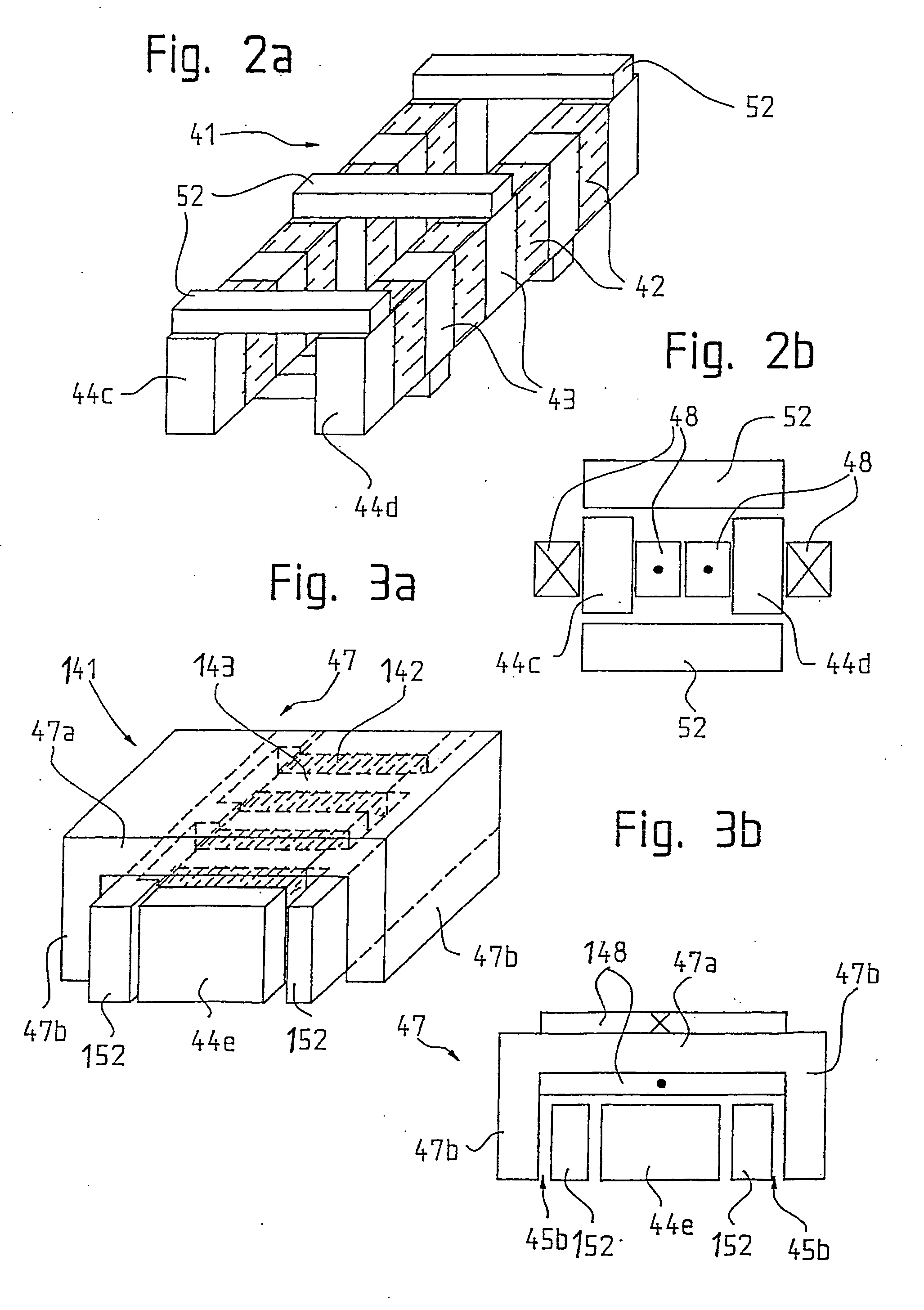Elevator, particularly for transporting persons
a technology for elevators and elevator cars, applied in the direction of elevators, motor/generator/converter stoppers, dynamo-electric converter control, etc., can solve the problems of insufficient power capability, redundant counterweights connected with elevator cars, and additional space requirements of drive pulleys and electric motors, and achieve favorable production costs and high power capability of drive motors.
- Summary
- Abstract
- Description
- Claims
- Application Information
AI Technical Summary
Benefits of technology
Problems solved by technology
Method used
Image
Examples
first embodiment
[0056] The first embodiment, which is shown in FIGS. 2a and 2b, of the excitation module 41 comprises the two collectors 44c, 44d which are constructed to be substantially I-shaped and arranged parallel to one another in the direction “X” of movement of the elevator car 20 and are each provided with a respective one of the excitation windings 48. With respect to a material-saving design, the feedback of the excitation winding 48, which usually consists of copper, in the case of arrangement of several of the excitation modules 41 can be utilized in order to excite an adjacent collector.
[0057] The second embodiment, which is shown in FIGS. 3a and 3b, of the excitation module 141 comprises a yoke 47 which surrounds the collector 44e at three sides and which is composed of a base plate 47a, which is provided with the excitation winding 148, and two limbs 47b. The limbs 47b are each spaced from the collector 44e by a respective intermediate space 45b and extend along two opposite sides o...
third embodiment
[0058] In a third embodiment, which is shown in FIGS. 4a and 4b, of the excitation module 241 is provided with the two collectors 44a, 44b which are constructed to be substantially U-shaped and face one another by their open sides and which are arranged to be spaced apart by an intermediate space 45a. The collectors 44a, 44b have limbs 46 which are respectively provided with the excitation windings 248 extending in the direction “X” of movement of the elevator car 20. Segments 252 of the rail 51 are arranged in the intermediate space 45a.
[0059] As is apparent from FIG. 4a, on supply of a three-phase current to the excitation winding 248 a magnetic flux M, which flows through the secondary part 50 and runs transversely to the direction “X” of movement of the elevator car 20, results. The magnet flux M of that kind also arises in the case of the forms of embodiment of the excitation modules 41, 141 according to FIGS. 2a through 3b. The first embodiment shown in FIGS. 2a and 2b differ...
PUM
 Login to View More
Login to View More Abstract
Description
Claims
Application Information
 Login to View More
Login to View More - R&D
- Intellectual Property
- Life Sciences
- Materials
- Tech Scout
- Unparalleled Data Quality
- Higher Quality Content
- 60% Fewer Hallucinations
Browse by: Latest US Patents, China's latest patents, Technical Efficacy Thesaurus, Application Domain, Technology Topic, Popular Technical Reports.
© 2025 PatSnap. All rights reserved.Legal|Privacy policy|Modern Slavery Act Transparency Statement|Sitemap|About US| Contact US: help@patsnap.com



